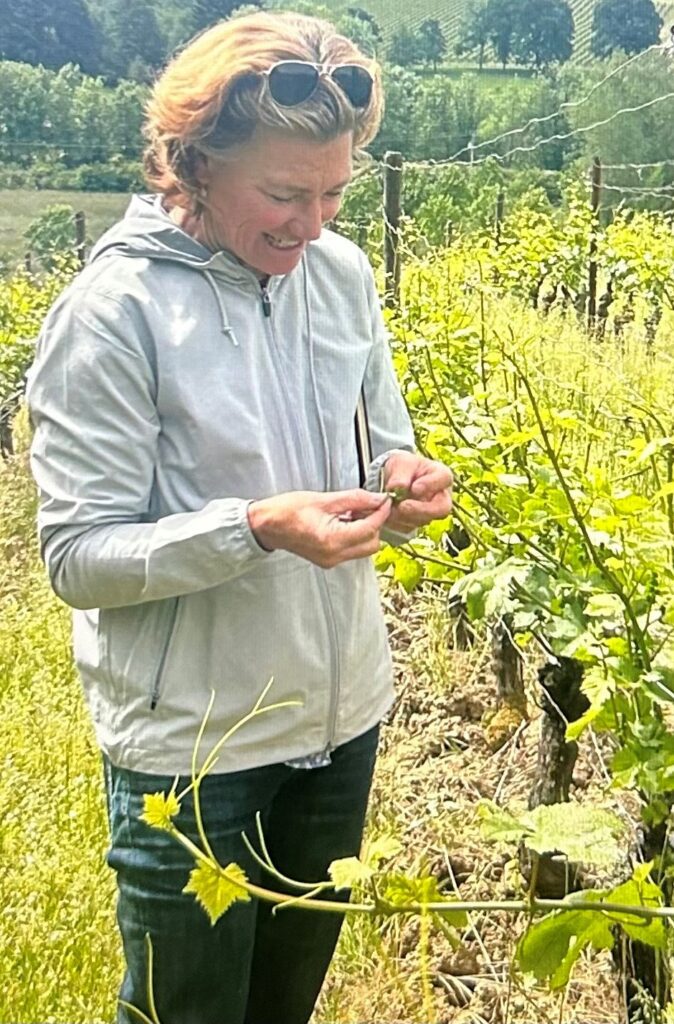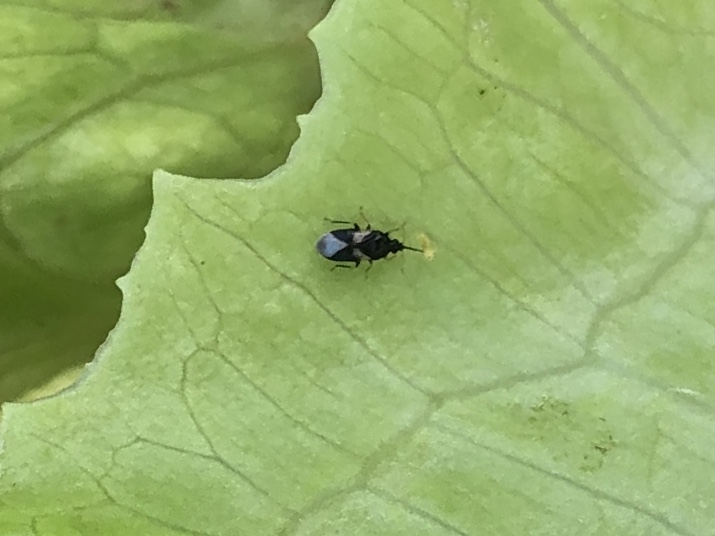California’s new Sustainable Pest Management roadmap will begin to influence growers across the country to reduce pesticides and to implement more ecological options

In January 2023, the California Department of Pesticide Regulations (CDPR) and California Environmental Protection Agency released the Sustainable Pest Management Roadmap for California, which charts a course for the state’s transition to sustainable pest management in agricultural and urban settings going forward.
The roadmap was developed over two years by a diverse group of stakeholders representing conventional and organic agriculture, community and environmental groups, tribes, researchers and government. CDPR has identified four goals, with 14 subgoals, as priorities over the next five years to lay the groundwork for this SPM roadmap. The overarching goal of the roadmap is to eliminate the use of high-risk pesticides by 2050. If you would like to learn more about the SPM roadmap, please check it out at https://www.cdpr.ca.sustainable_pest_management_roadmap.
Separately, California has also recently passed a bill called the California Nature-Based Climate Solutions Bill. The bill has set a lofty goal of increasing California’s certified-organic acreage from 10 percent in 2030 to 20 percent in 2045. Meeting these long-term NBS climate targets will require time, effort, funding and collaborative partnerships across many governments and sectors. The pace of implementation will depend upon the feasibility and availability of resources and competing priorities. To learn more, go to https://resources.ca.gov/Initiatives/Expanding-Nature-Based-Solutions.
As we all know — for better or for worse — what happens in California is usually followed by the rest of the country. Farmers will be forced to eventually transition away from these defined “high-risk” pesticides and to pursue more environmentally friendly models. What are being defined as high risk? The state is currently conducting its review, but the low-hanging fruits that will likely be defined as such are fumigants, pyrethroids, carbamates, neonics and broad-spectrum herbicides. These pesticides all have some environmental or health hazard associated with them, so removing them from the environment is a win, in my opinion.
Making the Transition
But what about the growers who currently depend on them? Growers need solutions in the form of equipment, methodologies and farm inputs that are sustainably sourced and effective. If farmers are to grow more holistically, then they need to be equipped with the information and tools to do so. These more ecological and sustainable inputs and pieces of equipment are not cheap — have you seen the price of a new articulated-arm mower? And the average grower doesn’t have extra money or time to spend on new ways of doing things. The best way to demonstrate new methodologies and product inputs are by carrying out one’s own research on a very small portion of the farm. Unfortunately, this takes extra money, time and people power. Even our colleges with organic research farms — Cal Poly SLO, UCSC, UC Davis, Chico and others — are constrained by money. It is the one big limiting factor.
Also, even though the technology, equipment, methodologies, farm input products, seeds and ideas are all available, the will of most growers still isn’t ready. There is not enough incentive at this point to change from conventional methods. So, they are waiting for the big stick, because the carrot is not working.

Creating a holistic farming system takes time — three to five years to really do it justice — so we need to start now. If, as a grower, you do have the drive to do this, dedicate the problem block — five acres max on a 300-acre farm — and turn it into a demonstration block. Plant cover crops in the off season. Use thoughtful cultivation when needed. Install hedgerows and insectary habitat. Incorporate mowing instead of herbicides. Use nutrient-use-efficient fertilizers that are carbon based. Start adding biologicals, including biostimulants and biopesticides. And augment with macro-organisms when that predator or parasite is not natural in that environment — otherwise, plant companion plants for those beneficials, and they will come!
And, when it comes to any input application, be it biological, biofertilizers, or just plain irrigation water, the 4R philosophy is vital. To achieve optimum efficacy of any product, the right timing, right rate, right placement and right source must be applied.
Also, understand how sustainable the product is that is being applied. How far has it traveled? Was it shipped to you dry or liquid (mostly water)? Is there a product similar that is more local? Is it mined from a mountain or cave, or is it manufactured on site from a recycled waste stream? What is its carbon footprint? These are some of the questions to ask about the products you are purchasing.
The Role of Biologicals
While biologicals have a longstanding presence in agriculture, their competition with conventional chemicals has been challenging. A grower will say, “Oh, I tried that, and it didn’t work.” Well, it was probably an older iteration of that active ingredient, it got left in a hot barn, or the 4Rs were lacking. Leave one R out of the equation and the house of cards tumbles. Today, with improved research tools, deeper insights into functionalities, formulation advancements, and these supportive California regulations, we are poised to positioning biologicals as a promising and indispensable tool for future farmers.
Fortunately, organic growers are way ahead of the curve to meet the SPM roadmap requirements. The organic community is in a unique position to be leaders and educators and to help facilitate the transition away from dependence on these broad-spectrum chemistries.
Organic growers understand the importance of an integrated, whole-systems approach. Such a methodology is focused on improving soil and plant health, increasing biodiversity both above- and belowground, and incorporating a sound and validated SPM and fertility program that doesn’t include synthetic chemistries. We need to preserve our precious resources — soil, water and farmers — for generations to come.
In a regenerative system, the main definition of soil health is the ability of the soil to cycle nutrients on its own. When you have an intensively tilled operation, this can be a tall ask. Reducing passes will lower your carbon footprint by conserving fuel and CO2 loss from the field. A good place to start is by planting a cover crop directly into the harvested crops residue. This will reduce passes in the field, and the cover crop will be more efficient at scavenging the remainder of the nutrients and soil moisture from that last crop. Residue management is key, so in the spring, manage it with thoughtful tillage, and if there is excessive residue, which can be a food safety hazard or can tie up nitrogen, use a biological that is designed to break down residue and then spoon feed nutrient-use-efficient biofertilizers that contain a good carbon-to-nitrogen ratio that feeds the microbial community but that also feeds the plant the appropriate nitrogen for optimum biomass accumulation during vegetative growth. Remember that high-carbon residue will tie up nitrogen, so having the right C:N ratio in your fertilizer is critical in proper nitrogen management.
Prevention is a big part of the SPM roadmap, and that plays hand in hand with biologicals. If you already have a problem, be it abiotic stressors or a pest outbreak, it is usually too late to do anything about it. You generally cannot spray your way out of a problem; prevention is key. Biologicals are mostly designed to be preventative, triggering plants’ defense mechanisms. Pheromones confuse the insect; pathogenic fungi infect the insect; and there are many other modes of actions. So don’t wait until it’s too late — be proactive in your applications, because it is always harder to play catchup once the problem occurs.
The other important preventative is to have a good insectary habitat in place close to or within your crop. This provides the pollen and nectar food source for your macro-organisms, such as syrphid flies, lacewing, ladybugs, big-eyed bugs, minute pirate bugs and the plethora of predatory mites and parasitic wasps that need to have this alternate food source for optimum viability, fecundity and overall health. There are great native species for pollinators, but an easy one to plant within a crop is good old sweet alyssum, Lobularia maritima.
Maintain a healthy farm by taking care to cover all the bases of soil, plant, water and ecosystem health. Do you love your farm? Does your farm love you?
Gina Bella Colfer is a sustainable solutions manager at Wilbur Ellis and is the 2023 California DPR IPM lifetime achievement award winner.
















